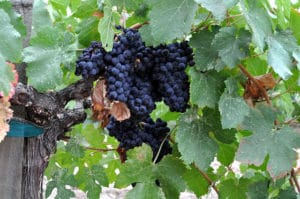Napa Valley Register
By Phil Coturri

The days are becoming shorter and cooler, harvest is drawing to a close, and grapevines are shutting down for a long winter’s nap: Autumn is officially upon us. While the next four to five months are not normally considered the growing season in the vineyards, at the certified organic Oakville Ranch Vineyards, this is the time of year that we are just starting growing our cover crops, soils, biodiversity and ecological balance, elements of healthy vineyards.
As the founder of Enterprise Vineyards, for the past 35 years I have farmed exclusively organic vineyards throughout Napa and Sonoma County. I have always focused my goals beyond organic farming for its environmental benefits. For more than three decades I have worked to prove that organically grown grapes offer winemakers the most balanced fruit and allow most accessible path a vineyard’s terroir, a wine’s expression of place. This can only happen when the vines and the land are in balance.
When Enterprise Vineyards began farming Oakville Ranch in 2007, we found a stunning vineyard site whose rich red soils had been depleted. We began rehabilitating the vineyard from the ground up, focusing on soil health and biodiversity as cornerstones of effective organic vineyard management. Our primary tool in focusing on these areas is cover crops.
At Oakville Ranch, the cover crop plan is multifaceted with goals of increasing organic matter in the soils, absorbing rainwater, preventing erosion, and harboring beneficial insects. In fact, we alternate row-to-row, spreading a “green manure” mix in one row and a clover mix in the next. The green manure mix: a proprietary blend of bell beans; three types of peas; and Cayuse oats adds nutrients and organic matter as it grows and once it is incorporated back into the soil. The clover mix is a crucial element in breaking the monoculture and integrated pest management as it attracts and provides habitat for predatory and beneficial insects.
In addition to the clover and the green manure, our cover crops include many members of the brassicaceae family, including varieties of radishes and Napa Valley’s second most important agricultural product: mustard. The mustard plant, deeply etched into the visual and historical fabric of the valley, plays a crucial role in cover crops. Brassica seeds are the first to germinate and they will be in bloom by New Year’s Day. More importantly, these plants are known for their deep taproots, which penetrate the rocky soil, allowing rainfall to soak in the ground instead of washing away our precious red soil.
We began spreading cover crop seeds in lulls between harvesting and will be seeding in earnest by November. In the depth of the rainy winter months, the cover crop will be thick with deep roots, preventing runoff and erosion. By vernal equinox (March 20 in 2013) the mustards and bell beans will easily equal the height of the vineyard’s trellis system. At that point, we will begin selectively mowing and incorporating as we work to replenish the soils as the grapes start growing and their roots begin searching for nutrients and water.
In fact, replenishing what the grapevines take from the soil strikes at the heart of what organic grapegrowing and quality winemaking is all about: seeking balance. We are constantly seeking to balance our impact in the vineyard with our contributions to the environment in that we farm in. Though vineyards affect habitat, we encourage birds of prey to return to our land by erecting hawk perches and owl boxes because there is no better way to manage rodents and other pests. Bird netting and other deterrents are ubiquitous in Napa Valley vineyards, but we go to great lengths to attract bluebirds that feast on pest insect species. These are just some of the methods we use to seek a balance between the vineyard and its environment.
By any measure, this year’s harvest at Oakville Ranch was a success. Fruit was bountiful, flavors were balanced yet intense, and winemakers were happy. But in an organic vineyard, we measure success in other ways too. The soils were alive, teeming with organic matter; hawks soared above to the chagrin of mice and voles; bluebirds patrolled the vineyard in search of a bug-filled meal. It may seem like a truism, but the best way to make sure a wine is balanced expression of the vineyard it is grown in, is to make sure the vineyard is balanced with the ecosystem around it. In an organic vineyard we seek balance from deep in the soil to the skies high above, and it all starts now — when we start the growing season for healthy soil.
So this winter, as you drive by Napa’s famous mustard flower-splashed vineyards, think of the depth of those roots and their role in your favorite Napa cabernet.
Phil Coturri is a viticulture consultant and a member of Napa Valley Grapegrowers, who submit a monthly column to the Napa Valley Register.

